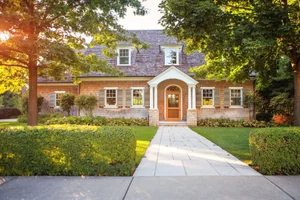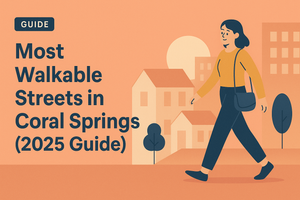The real estate industry in the United States finds itself in a strange situation. The nationwide home shortage and a push for greater sustainability have created an unprecedented housing conundrum. Building affordable housing from the ground up will take years to solve the crisis, but another solution could accelerate our progress — adaptive reuse.
Instead of starting from scratch, property owners and real estate developers can repurpose their existing buildings into affordable residences. Here are some creative strategies that Floridians can use to revamp their buildings into new and improved residential properties.
What Is Adaptive Reuse?
Adaptive reuse is the practice of renovating an old building for a new purpose. It’s a complete overhaul of the building’s functionality with minimum demolition or construction. This strategy allows the building to retain its old sturdy frame on the outside while taking on a new role as a community center on the inside.
Major cities are full of empty office space due to business closures and the rise of remote work during COVID-19. The U.S. government also owns about 45,000 underutilized buildings across the country.These spaces are occupying valuable city lots and don’t contribute anything to the community or economy. Instead of tearing them down, we can give them a new lease on life.
Other types of abandoned buildings that could use a makeover include old warehouses, schools and churches. Reimagining these structures as apartments and multi-family properties and can simultaneously address multiple problems facing Florida’s housing market.
Benefits of Adaptive Reuse
Adaptive reuse primarily serves as a cost-effective and time-saving strategy to create important community centers from existing architecture. The construction industry doesn’t have the money or resources to keep up with the demand for affordable housing due to significant supply chain backlogs and not enough skilled labor.
Repurposing old buildings is also a more eco-friendly alternative. Demolished buildings represent more than 90% of the construction industry’s waste. The average demolition project releases particulate matter and harmful chemicals into the atmosphere, affecting the community’s air quality, water quality and local ecosystems.
Additionally, older buildings usually consist of hazardous materials and chemicals such as volatile organic compounds (VOCs) and heavy metals. These substances go to landfills after demolitions, contaminating the air and surrounding groundwater. Adaptive reuse eliminates a significant amount of this waste and finds another purpose for these old materials.
Florida has the ideal environment for adaptive reuse projects. Contractors can get extra help from LEED or U.S. Green Building Council professionals to make eco-friendly upgrades. Florida is the leading state in the union when it comes to sustainable architectural designs, and old abandoned buildings provide unique opportunities for us to implement those designs.
Repurposing existing buildings also helps to slow down urban development. Florida has recently become the fastest growing state in the country thanks to thriving metropolitan areas like Tampa, Orlando and Jacksonville. Adaptive reuse enables these cities to preserve their old architecture and expand their geographic footprint at a more manageable pace.
Unique Types of Adaptive Reuse
An adaptive reuse project can serve a variety of unique purposes. Although they all follow the same blueprint of remodeling an old building, the remodeling process and end goal can look quite different. Here are some of the most popular and successful types of adaptive reuse — plus some examples from here in the Sunshine State.
Complete Renovation
A complete renovation is the most common adaptive reuse project. Unlike a typical renovation, this project creates an entirely new function for the existing building. Another name for this extensive type of renovation is “upcycling”. There has been a nationwide upcycling trend involving the creation of new education centers from abandoned warehouses and factories.
Here in Florida, upcycling old commercial buildings is the ideal way to provide affordable housing. Although Florida has a robust real estate market, the state’s expensive homeowner’s insurance rates make the cost of living higher than the national average. Those who can’t afford these high rates can find a more affordable alternative in repurposed multi-family properties.
So far, the largest residential adaptive reuse project in Florida has been the readaption of the old Miami Heart Institute in South Beach. The former six-building hospital has been converted into a multi-family housing development with luxury amenities. It includes 111 condos with 60 different designs, totaling about 678,000 square feet.
Another great example is the repurposed Gulf View Square Mall in Tampa Bay. The old mall is now a growing apartment complex with plans for future expansion. Big commercial buildings like abandoned malls and hospitals are the ideal structures for creating affordable housing in a timely manner.
2. Historic Preservation
With historical preservations, the primary goal is to maintain local buildings with historical significance, such as old churches, schools or museums. These projects aim to leave as much of the exterior as possible while upgrading the interior for a new purpose. For example, a former high school in Sarasota has become a new art museum and an influential cultural center.
Adaptive reuse allows Floridian communities to keep historical buildings alive in other ways too. For example, the old Berryhill School that burned down in Pensacola still has plenty of reusable materials. Residents are planning on repurposing the school’s old bricks in other local construction projects to pay homage to the school’s legacy.
3. Facadism
Facadism is the adaptive reuse strategy used on old buildings that are starting to significantly deteriorate. A “soft demolition” picks apart the building’s interior piece by piece while trying to maintain the exterior facade. Supporting the fragile facade often requires expensive and invasive solutions, so this approach is more rare than renovations or historical preservations.
A great example of a facade project is an old waterworks building located in St. Augustine. It looks quite different from its 1898 design. You can still see hints of the building’s original function, but it is now a venue for numerous cultural events including concerts and musical lessons.
Adaptive Reuse is Reshaping Florida Communities
Adaptive reuse is a faster, cheaper and greener alternative to demolishing old buildings and constructing new residential properties from scratch. Whether these repurposed buildings serve as apartments, multi-family properties or cultural centers, they are reshaping Florida communities and giving historic architecture a new lease on life.










